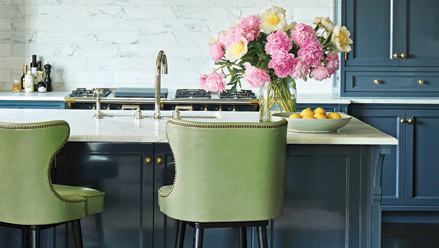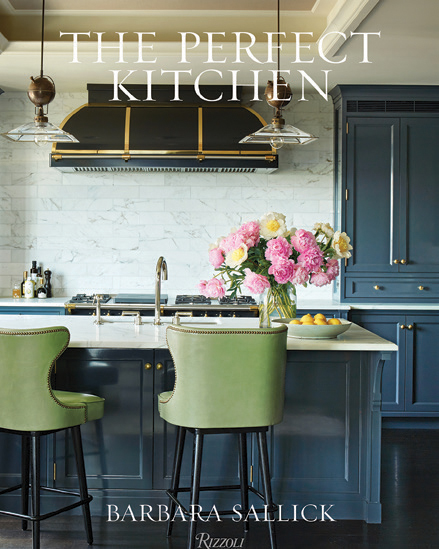
19 Apr Design Elements: The Perfect Kitchen
Known as the heart of the home, kitchens have likely been getting extra attention and use during the COVID-19 pandemic. So the recent release of The Perfect Kitchen came at a fortuitous time. Featuring tips and exploring the elements and the process of designing a kitchen, the book was written by Barbara Sallick, co-founder of Waterworks, which specializes in luxury bathroom and kitchen fixtures and accessories. Along with Sallick’s informative and engaging narrative, it also features photos of extraordinary custom culinary spaces that are both inspirational and aspirational, including three standout examples from the Jackson Hole, Wyoming-based interior design firm, WRJ Design.

“The kitchen touches on realms of memory and intimacy, elements much more challenging to get right than hardware or paint color,” writes Sallick, who emphasizes the importance of the kitchen as an experiential space — functionally, aesthetically, and emotionally. And by making a kitchen truly personal, all three of those boxes get checked, the author explains.
This same philosophy is shared by WRJ, and the firm starts each design project with a detailed questionnaire that “lets us understand all the extensive and different uses and needs the client will have for the kitchen,” says Rush Jenkins, creative director and co-owner of WRJ Designs with partner Klaus Baer. “And we love to customize our clients’ kitchens by incorporating pieces or collections that are meaningful to them.”
While the three WRJ kitchens selected for Sallick’s book look very different — one features a Mid-century Modern vibe with sleek wooden surfaces; another combines ultra-contemporary, antique, and rustic elements; and the third revolves around a standout range with a custom hood — all three take cues from their stunning Rocky Mountain settings and are as functional as they are beautiful.
“With today’s open floor plans leaving kitchens prominently exposed to other rooms, there’s definitely the trend that envisions the kitchen as a work of art in addition to a functional space,” says Jenkins. “That idea fits with our belief that a kitchen is never a sequestered room, but always intimately connected to other parts of the home. And when it comes to the finishes of tile, stone, and hardware, we make sure that each works with the others to create a feeling of harmony in the kitchen as a whole. Ultimately, we’re known for serene, beautiful kitchens that are functional when they’re being used, and artistic statements when they’re not.”




No Comments